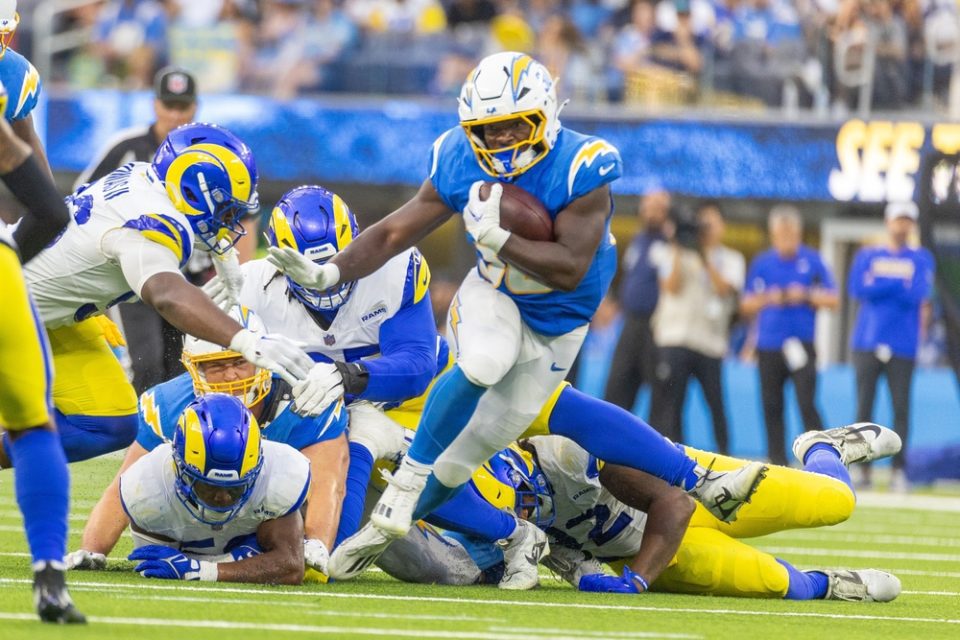From sideline specialists to game-changing superstars

The genesis of modern football
The evolution of the wide receiver position in professional football is one of the sport’s most fascinating stories. From its humble origins after the legalization of the forward pass in 1906, the wide receiver has transformed into an icon of athletic prowess that continues to push the boundaries of human performance. This transformation signifies not just a shift in playing style, but a complete reimagining of football’s strategic landscape.
Pioneering the position
The late 1930s marked a pivotal turning point in football’s offensive strategies, with teams gradually incorporating passing plays as a staple in their playbooks. Don Hutson was the first to redefine the role, bringing sophisticated route-running techniques and reliable hands to the field. His innovations laid the foundation for the modern wide receiver, as his play set a new standard for what was possible at the position. Hutson’s ability to outmaneuver defenders and catch passes consistently redefined how the game was played and inspired future generations of receivers.
The golden era
The wide receiver position reached its peak during the 1980s and early 2000s, a period marked by dramatic performances and record-breaking achievements. Jerry Rice stands as the figurehead of this era, setting a benchmark that has yet to be matched. With 22,895 receiving yards, 1,549 receptions, and 197 touchdowns, Rice’s statistics are legendary and serve as a testament to his meticulous preparation and relentless pursuit of excellence. His precise route-running, unmatched work ethic, and ability to perform under pressure elevated the wide receiver from an auxiliary role to one of football’s most crucial positions.
Evolution of playing styles
The game continued to evolve as new talents emerged, each bringing their own unique style and forcing the league to adapt. Randy Moss, for example, changed the deep passing game forever. His rare combination of size, speed, and vertical leap redefined the notion of a downfield threat, compelling defensive coordinators to develop new strategies to contain him. Moss’s ability to “take the top off” of any defense shifted the focus of many teams to prioritizing deep coverage and altering defensive schemes to counter his impact.
Meanwhile, Terrell Owens introduced a new level of physicality to the position. Known for his imposing size and fierce competitiveness, Owens challenged traditional beliefs about wide receiver play. He was not just a receiver but a dominant force capable of breaking tackles, outmuscling defenders, and changing the course of a game with sheer power and determination.
Modern innovation
Larry Fitzgerald exemplifies what the modern receiver looks like—a combination of reliability, versatility, and technical skill. With hands that seemed glued to the ball and an unmatched ability to read defenses, Fitzgerald epitomized the complete receiver. His route-running was precise, his blocking second to none, and his capacity to make critical catches in high-pressure situations made him a model for the next generation.
Calvin Johnson, famously known as “Megatron,” pushed the limits of what was possible on the field. Standing at 6-foot-5 and running a 4.35-second 40-yard dash, Johnson’s physical attributes were unparalleled. His 1,964-yard season in 2012 set a record that cemented him as one of the greatest athletes in football history, demonstrating that size and speed could coexist with exceptional technical prowess.
Technical advancement
The wide receiver position has grown more complex, demanding an ever-expanding repertoire of skills. Receivers today are expected to master intricate route-running concepts, refine release techniques, and enhance their catch mechanics. This evolution is supported by the strategic demands of modern offenses, which rely on receivers to read defensive alignments and execute timing patterns that synchronize seamlessly with their quarterback. The technical demands have elevated the position from a role focused solely on athleticism to one that requires intellectual acumen and deep strategic understanding.
Future trajectory
As the NFL continues to shift toward a pass-heavy league, the wide receiver’s role is poised to grow in significance. With each passing generation, the expectations for what a wide receiver should be capable of have only expanded, pushing the limits of both physical and technical achievement. The increasing emphasis on passing game schemes, combined with advances in sports science and training, suggests that the future will see an even more elite class of receivers. The game is evolving, and wide receivers are at the forefront of that change, ensuring their place as some of the most dynamic and influential athletes in the sport.













